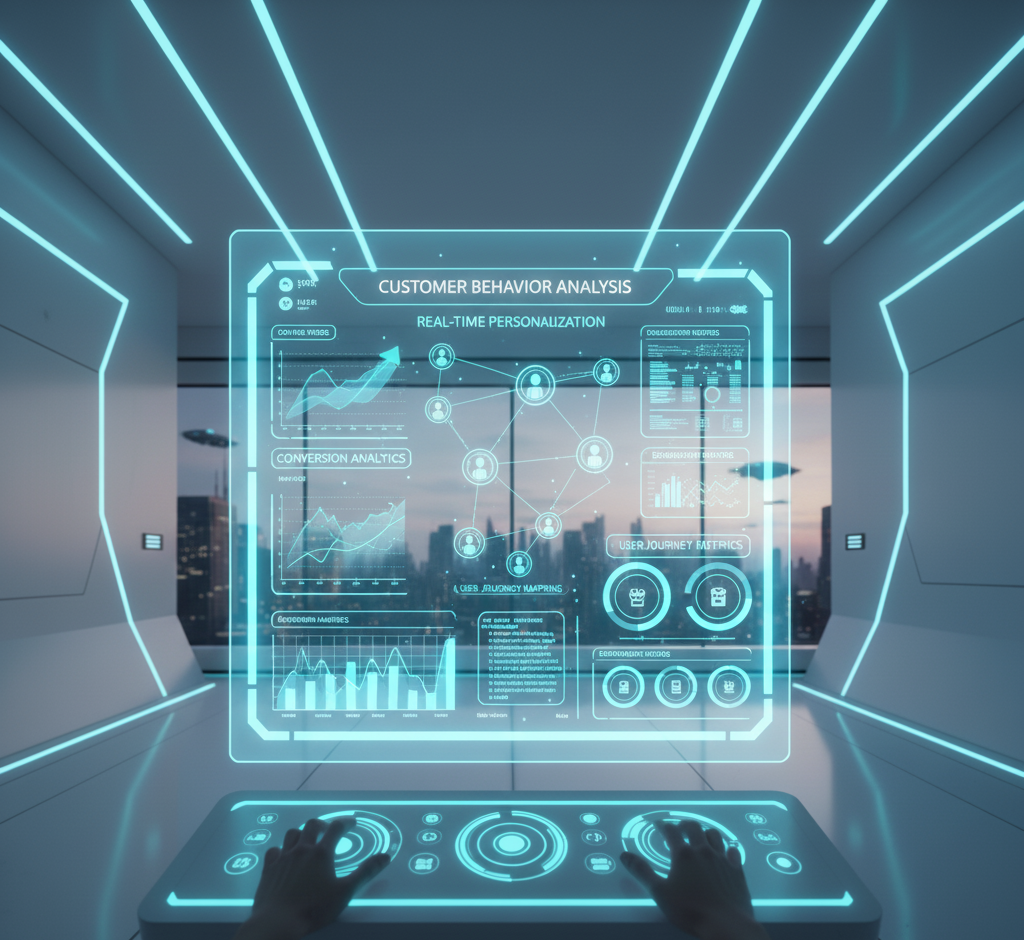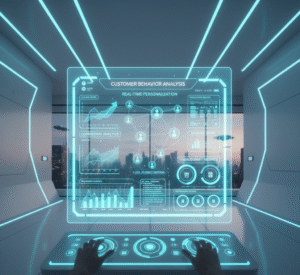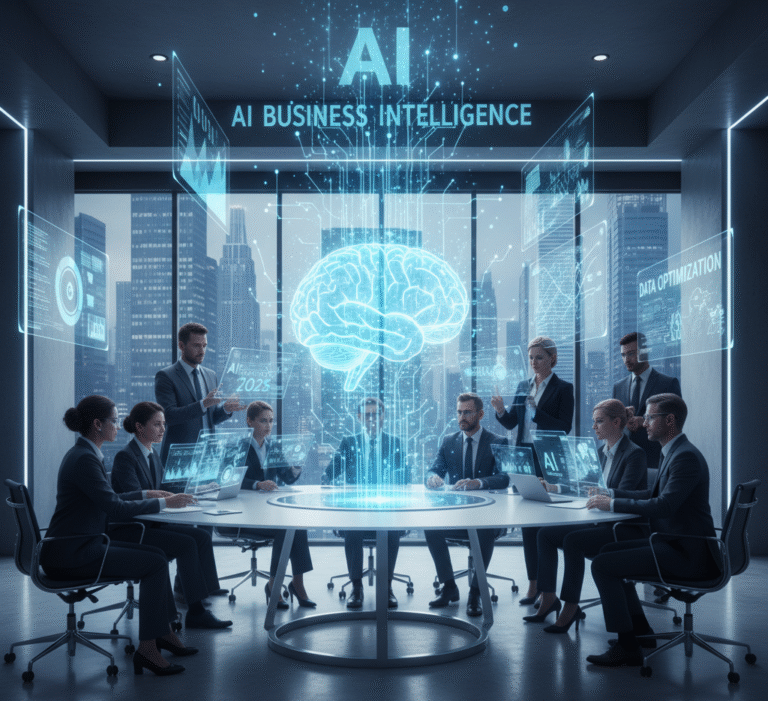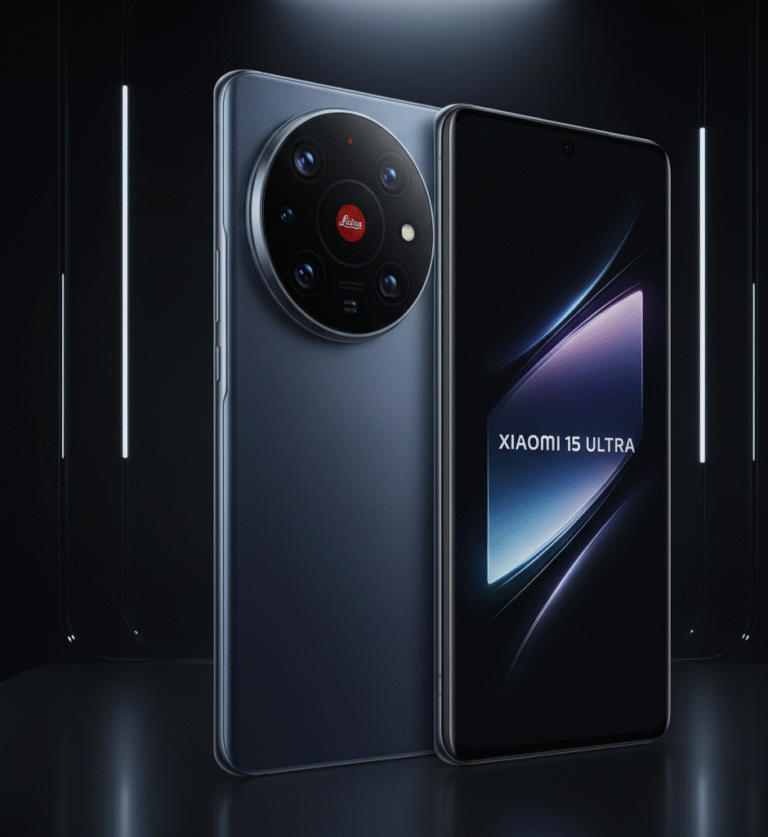
AI-Powered Personalization in CRO transforming digital conversions in 2025.
🌍 Introduction: Welcome to the Era of Intelligent Conversion Optimization
In 2025, conversion rate optimization (CRO) is no longer just about testing headlines or colors — it’s about deep personalization powered by artificial intelligence.
Today’s marketers rely on AI-driven analytics, zero-party data, and real-time behavioral modeling to deliver experiences that convert curiosity into commitment.
From micro-conversions to predictive personalization, and from voice-based searches to AR/VR product visualization, modern CRO has become an intelligent ecosystem of data, psychology, and technology.
This guide dives deep into how AI-powered personalization CRO is reshaping the digital marketing world — and how your brand can ride this transformation.
🤖 1. What is AI-Powered Personalization in CRO?
AI-powered personalization combines artificial intelligence, behavioral analytics, and automation to deliver unique user experiences that lead to higher conversion rates.
Instead of showing the same page to everyone, AI learns from each visitor’s:
-
Browsing behavior
-
Device type
-
Purchase history
-
Emotional tone (from sentiment analysis)
-
Real-time actions
Then it dynamically adjusts content, CTAs, product suggestions, and layout — in milliseconds.
In short:
AI doesn’t just track — it predicts what will make each visitor convert.
📊 2. Zero-Party Data: The New Goldmine in Conversion Optimization
With privacy laws tightening and cookies fading away, zero-party data has become the most valuable asset for CRO.
Zero-party data = information users willingly share with you.
Examples include:
-
Preferences selected in a quiz
-
Answers in interactive polls
-
Email newsletter choices
-
Onboarding questionnaires
Why It Matters:
-
It’s fully consent-based (privacy-friendly)
-
It drives deeper personalization
-
It improves conversion trust
Pro Tip: Use quizzes or preference-based popups to collect data ethically while boosting engagement.
🔍 3. Micro-Conversions Tracking: The Hidden CRO Superpower
Not every conversion is a sale. Sometimes, tiny interactions (micro-conversions) reveal massive insights.
Examples of Micro-Conversions:
-
Clicking a CTA button
-
Watching 50% of a product video
-
Downloading a guide
-
Adding to cart without purchase
Tracking these micro-signals allows AI to predict user intent and trigger timely personalization, such as:
-
Popups before exit
-
Chatbot offers
-
Email reminders
This data feeds AI models for predictive personalization, discussed next.
🌍 Introduction: The Digital World’s Dark Side in 2025
The internet connects us like never before — from online shopping to digital banking — but it also exposes us to cybercriminals who are smarter, faster, and more deceptive than ever.
As we step into 2025, online scams have evolved with AI-generated deepfakes, fake job portals, and crypto frauds. Even educated users are falling victim to cleverly designed traps.
https://techblogs360.com/online-scams-awareness-2025/
🔮 4. Predictive Personalization: Converting Intent into Action
Predictive personalization uses machine learning to forecast what users want — before they even say it.
AI analyzes:
-
Browsing time
-
Product preferences
-
Abandonment patterns
-
Historical data
Then it automatically:
-
Suggests next best offers
-
Displays relevant CTAs
-
Adjusts page layout dynamically
Example:
An eCommerce site predicts a user’s next interest (e.g., gaming accessories after viewing a laptop) and instantly shows relevant deals.
📱 5. Mobile-First Conversion Optimization
Over 75% of web traffic now comes from mobile.
In 2025, mobile-first CRO is not optional — it’s essential.
AI helps by:
-
Adapting designs dynamically to screen size
-
Predicting touch behavior
-
Optimizing scroll patterns
-
Using micro-interactions for engagement
Tips for Mobile CRO:
-
Keep CTAs thumb-friendly
-
Use short forms
-
Prioritize load speed
-
Integrate mobile wallets (Apple Pay, GPay)
🌐 6. Omnichannel CRO Strategy: Consistency Across Touchpoints
Today’s user may:
-
Discover your brand on Instagram
-
Browse your website on mobile
-
Complete purchase via desktop
Omnichannel CRO ensures that every step feels seamless and personalized.
AI-powered omnichannel tools unify user behavior across:
-
Web
-
Mobile apps
-
Email
-
Chatbots
-
Physical stores
This integration enables real-time personalization and consistent messaging, increasing conversion trust.
💎 7. Trust Signals: The Secret to Conversion Confidence
Users buy when they trust you.
AI helps highlight trust signals dynamically based on user behavior.
Types of Trust Signals:
-
Verified reviews
-
Real-time purchase notifications
-
Secure payment badges
-
Social proof (UGC posts)
AI identifies when a user hesitates — and boosts reassurance via credibility badges or testimonials.
💻 8. Optimizing Landing Pages for Conversions – AI-Powered Personalization
Landing pages remain the heart of CRO.
AI-driven CRO tools (like Unbounce Smart Traffic and Instapage AI) now test multiple layouts, headlines, and CTAs in real-time.
Landing Page Optimization Tips:
-
Keep the headline clear and promise-based
-
Use scroll heatmaps to locate drop-off points
-
Add one clear, actionable CTA
-
Include social proof & urgency triggers
-
Use dynamic content personalization (AI adjusts copy based on traffic source)
🎙️ 9. Voice Search and CRO – AI-Powered Personalization
By 2025, over 50% of searches happen via voice assistants.
Optimizing for voice search conversions requires natural, conversational phrases.
AI helps:
-
Detect voice intent (question-based searches)
-
Present voice-optimized landing pages
-
Automate responses in voice commerce
Example:
User says: “Order protein powder under ₹1000” — AI chatbot filters and displays instant voice-to-cart results.
⚡ 10. Real-Time A/B Testing Automation – AI-Powered Personalization
Traditional A/B testing is slow.
AI-based real-time A/B testing uses reinforcement learning to continuously adapt.
Instead of manual comparison, AI instantly selects the best-performing variation for each user segment.
Benefits:
-
Faster optimization
-
Dynamic testing
-
Continuous learning
-
No human bias
Tools like Google Optimize AI, Evolv AI, and Adobe Target dominate this space in 2025.
🔐 11. Ethical Testing & Privacy in CRO – AI-Powered Personalization
With GDPR and data privacy rules expanding globally, ethical CRO has become a brand differentiator.
Key Practices:
-
Collect only necessary data
-
Use zero-party data (consent-based)
-
Display transparent data policies
-
Avoid manipulative “dark patterns”
AI can flag unethical UX patterns like fake countdown timers or forced opt-ins — making CRO both effective and ethical.
👥 12. Using UGC (User-Generated Content) for Trust & Conversions – AI-Powered Personalization
User-generated content (UGC) — like reviews, photos, and testimonials — builds instant trust.
AI helps analyze sentiment from thousands of reviews to highlight the most persuasive content on pages.
Example:
Showing “Top-rated by gamers like you” with AI-filtered UGC increases conversion rates by 34%.
🧩 13. Dynamic CTAs Based on User Behaviour – AI-Powered Personalization
Forget static “Buy Now” buttons — AI creates context-aware CTAs that change based on:
-
Scroll depth
-
Time on site
-
Exit intent
-
Device type
Example:
If a user hesitates, CTA changes to “Need Help Choosing?” instead of “Buy Now.”
Result: More empathy = More conversions.
💳 14. Simplified Checkout Process – AI-Powered Personalization

A complicated checkout kills conversions.
AI streamlines this by predicting and removing friction points.
Smart Checkout CRO Techniques:
-
Auto-fill and one-tap payments
-
Real-time shipping cost predictions
-
Address verification automation
-
Personalized upsells at checkout
Fact:
Simplifying checkout can boost conversions by up to 45%.
🧠 15. AI-Driven Copy Optimization – AI-Powered Personalization
AI tools like Jasper, Copy.ai, and ChatGPT analyze audience psychology to generate high-converting copy.
AI-driven CRO copywriting includes:
-
Emotional sentiment mapping
-
Predictive headline scoring
-
Context-based CTAs
-
Adaptive tone for different personas
AI doesn’t just write — it learns what persuades.
🌍 16. Hyper-Personalization at Scale – AI-Powered Personalization
Hyper-personalization uses AI + automation to deliver unique experiences to millions simultaneously.
It’s powered by:
-
Zero-party + first-party data
-
Predictive analytics
-
Real-time segmentation
Example:
Netflix and Amazon use hyper-personalization to recommend content/products instantly based on user behavior.
🚪 17. Behavioral Triggers for Exit Intent – AI-Powered Personalization
When users are about to leave, AI detects exit intent signals (like cursor movement) and triggers:
-
Personalized popups
-
Discount offers
-
Chatbot assistance
These micro-actions recover lost conversions without being intrusive.
🎥 18. Video Optimization for Conversions – AI-Powered Personalization
AI analyzes video engagement metrics — such as watch time, drop-off points, and emotional tone — to optimize visual content.
Tips:
-
Add CTA overlays
-
Use interactive product demos
-
Test short vs long video variants
-
Include subtitles for accessibility
Video-based landing pages now convert up to 60% higher than static ones.
🕶️ 19. AR/VR for Product Visualization in CRO – AI-Powered Personalization
AR/VR experiences allow users to try products virtually — from furniture fitting to apparel styling.
AI enhances this with 3D behavioral data and contextual cues, creating immersive shopping journeys that boost confidence and reduce returns.
🔄 20. Unified Sales & Marketing Experiences – AI-Powered Personalization
AI unifies marketing, sales, and customer support into one conversion engine.
AI enables:
-
Shared customer data dashboards
-
Predictive lead scoring
-
Personalized post-purchase engagement
This integration ensures consistency from first click to long-term loyalty.
🏁 Conclusion: CRO in 2025 = Human Experience + Artificial Intelligence
AI-powered personalization CRO is more than data science — it’s human psychology optimized by AI precision.
The future of conversion optimization lies in:
-
Emotionally aware AI
-
Real-time behavior adaptation
-
Privacy-first personalization
-
Ethical and transparent data usage
Brands that master this balance will achieve not just conversions — but lasting customer relationships.



